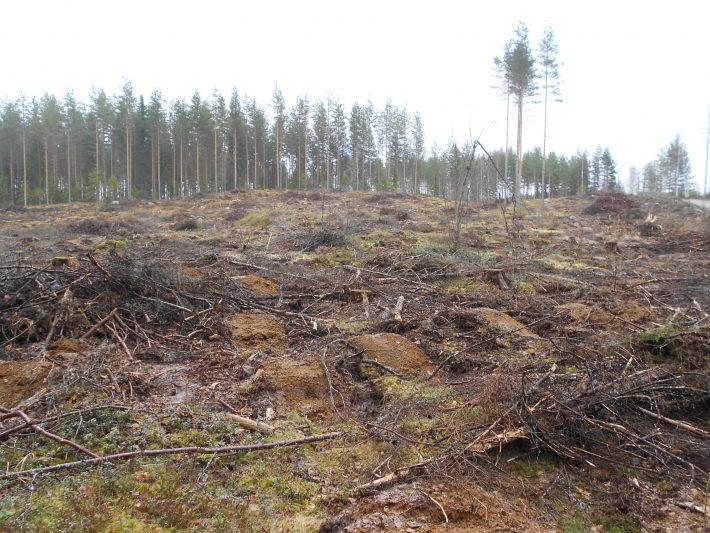Press Release: Diversified management provides multiple benefits in boreal forests
Academy of Finland Press Release
Forests provide multiple social and environmental benefits and play a key role in bioeconomy particularly in the Nordic countries.

The Finnish bioeconomy strategy aims to considerably increase the use of forest-based biomasses and forest harvesting by 2025. However, new research published in Journal of Applied Ecology, shows that there are strong conflicts between intensive timber harvesting and the provision of other benefits for the maintenance of biodiversity. The results are part of a research project lead by Professor Mikko Mönkkönen and funded by the Academy of Finland and Kone foundation. The project aims at identifying conflicts and synergies between ecosystem services and biodiversity at the forest landscape scale.
Combining forest growth simulations with multiobjective optimisation, the researchers found that it was not possible to achieve high levels of environmental benefits (such as climate regulation through carbon storage) or biodiversity if the objective of forest management was to maximise timber harvest revenues. However, with small reductions of timber revenues it was possible to greatly increase the multifunctionality of the landscape, especially the biodiversity indicators.
“Forest management actions alternative to the recommended intensive management, such as reducing thinnings, extending the rotation period and increasing the amount of area set-aside from forestry, may be necessary to safeguard biodiversity and other benefits provided by boreal forests in Fennoscandia,” says María Triviño, postdoctoral researcher at the University of Jyväskylä.
The results of the project show that no forest management type alone is able to maximise timber revenues, carbon storage and biodiversity individually or simultaneously, and that a combination of different regimes is needed to resolve the conflicts among these objectives.
“We conclude that it’s possible to reduce the trade-offs between different objectives by applying diversified forest management planning at the boreal landscape-level, and that we need to give up the all-encompassing objective of very intensive timber production, which is prevailing particularly in Fennoscandian countries,” says Mikko Mönkkönen.
Article: Triviño, M., Pohjanmies, T., Mazziotta, A., Juutinen, A., Podkopaev, D., Le Tortorec, E. & Mönkkönen, M. (DOI 10.1111/1365-2664.12790, http://onlinelibrary.wiley.com/doi/10.1111/1365-2664.12790/full) Optimizing management to enhance multifunctionality in a boreal forest landscape. Journal of Applied Ecology.
More information:
- Postdoctoral researcher María Triviño, Department of Biological and Environmental Science
University of Jyväskylä, Finland
phone: +358 408054735, e-mail: trivino(at)jyu.fi - Professor Mikko Mönkkönen, Department of Biological and Environmental Science
University of Jyväskylä, Finland
phone: +358 50 4413682, e-mail: mikko.monkkonen@jyu.fi - http://ly/B_E_R_G
Academy of Finland Communications
Communications Specialist Leena Vähäkylä
tel. +358 295 335 139
firstname.lastname(at)aka.fi
Like what we stand for?
Support our mission and help develop the next generation of ecologists by donating to the British Ecological Society.